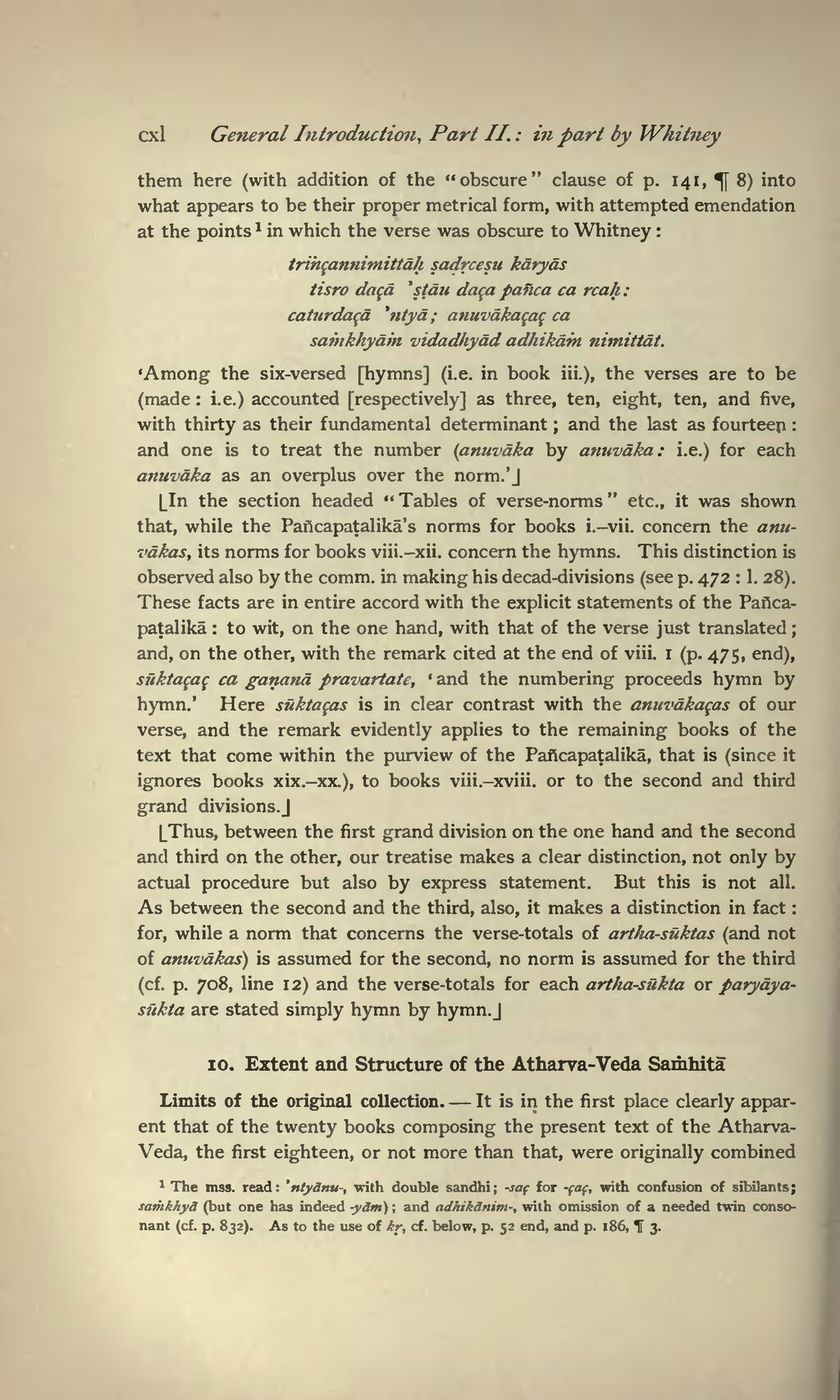them here (with addition of the "obscure" clause of p. 141, ¶8) into what appears to be their proper metrical form, with attempted emendation at the points[1] in which the verse was obscure to Whitney:
triṅçannimittāḥ ṣaḍṛceṣu kāryās
tisro daçā ’ṣṭāu daça pañca ca rcaḥ:
caturdaçā ’ntyā; anuvākaçaç ca
saṁkhyāṁ vidadhyād adhikāṁ nimittāt.
'Among the six-versed [hymns] (i.e. in book iii.), the verses are to be (made: i.e.) accounted [respectively] as three, ten, eight, ten, and five, with thirty as their fundamental determinant; and the last as fourteen: and one is to treat the number (anuvāka by anuvāka: i.e.) for each anuvāka as an overplus over the norm.'⌋
⌊In the section headed "Tables of verse-norms" etc., it was shown that, while the Pañcapaṭalikā's norms for books i.-vii. concern the anuvākas, its norms for books viii.-xii. concern the hymns. This distinction is observed also by the comm. in making his decad-divisions (see p. 472: l. 28). These facts are in entire accord with the explicit statements of the Pañcapaṭalikā: to wit, on the one hand, with that of the verse just translated; and, on the other, with the remark cited at the end of viii. i (p. 475, end), sūktaçaç ca gaṇanā pravartate, 'and the numbering proceeds hymn by hymn.' Here sūktaças is in clear contrast with the anuvākaças of our verse, and the remark evidently applies to the remaining books of the text that come within the purview of the Pañcapaṭalikā, that is (since it ignores books xix.-xx.), to books viii.-xviii. or to the second and third grand divisions.⌋
⌊Thus, between the first grand division on the one hand and the second and third on the other, our treatise makes a clear distinction, not only by actual procedure but also by express statement. But this is not all. As between the second and the third, also, it makes a distinction in fact: for, while a norm that concerns the verse-totals of artha-sūktas (and not of anuvākas) is assumed for the second, no norm is assumed for the third (cf. p. 708, line 12) and the verse-totals for each artha-sūkta or paryāya-sūkta are stated simply hymn by hymn.⌋
10. Extent and Structure of the Atharva-Veda Saṁhitā
Limits of the original collection.—It is in the first place clearly apparent that of the twenty books composing the present text of the Atharva-Veda, the first eighteen, or not more than that, were originally combined
- ↑ The mss. read: ’ntyānu-, with double sandhi; -saç for -çaç, with confusion of sibilants; saṁkhyā (but one has indeed -yām); and adhikānim-, with omission of a needed twin consonant (cf. p. 832). As to the use of kṛ, cf. below, p. 52 end, and p. 186, ¶3.
